Garden Glimpses: Spring Equinox
AAA kicks off a new department this month with “Garden Glimpses”, a photographic memoir of life here at what I affectionately term “Pokeberry Farm”, after our most prolific vegetative output (the pokeberry, AKA pokeweed, is a large native plant, sometimes up to 6 feet tall, with spreading branches bearing pendulous, almost grapelike bunches of purple-black fruits; birds prize these, and their droppings proliferate this invasive species all over the yard). Over the past year I’ve chronicled each sabbat, or pagan festival, and have integrated my horticultural adventures within that seasonal framework. But I have only so much to say about pagan holidays, whereas the garden is the gift that keeps on giving, so we’ll be morphing the original “House Diary” column into a more flora-focused one. After all, with asteroid Gardner just a degree off my natal Sun, I’m only an “e” away from being the real thing!
When I took over the property in April 2019, I was determined never again to cut a blade of grass, so I fenced in the back and side yards, and had the sod pulled up to make room for planting beds. It’s been a period of trial and error since then, and one of the main areas of concentration has been the installation of spring-flowering bulbs. Never one to do things by halves, over the course of two consecutive autumns, we planted some 1200 bulbs, and I thought that was my limit!
But as I meander the garden this spring, inspecting every new shoot that makes its way into the sunlight, I realize there’s actually room for much more. October, look out! Here I come!
But for now it’s time to watch this season unfold, in the form of my bulb babies, some of which I inherited, others entering their terrible twos, and some newborns.
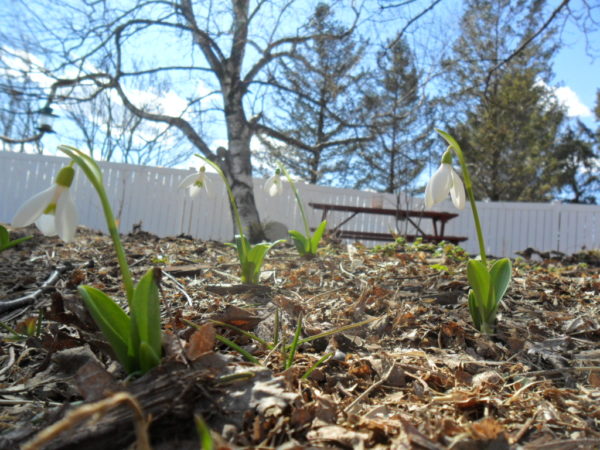
Earliest to emerge are Galanthus, commonly known as snowdrops; Eranthis, i.e., winter aconite; and snow crocus. All three hail from the same general region, southern Europe and Asia Minor, though some are more widely distributed than others.
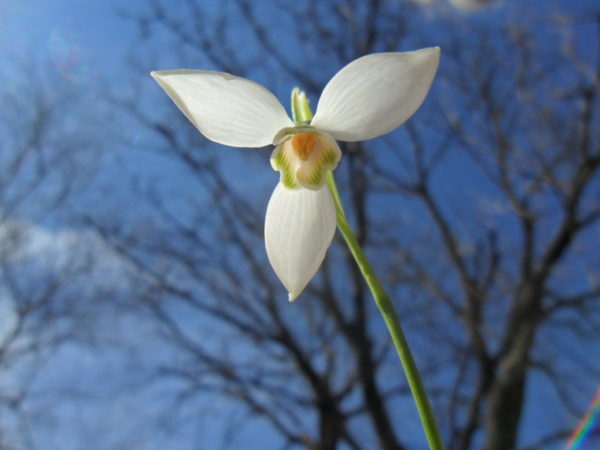
All three of these were first-year plantings, installed in the fall of 2019, and so are established in the landscape, and should be spreading, if happily placed. Regrettably, not all of mine are. The snow crocus have done the best, and bulbs yielding 2 or 3 blossoms in their first year are now bursting with 5 or 6. Snow crocus are smaller than the species crocus most of us are familiar with, which bloom later. The most common variety is a brilliant yellow with purple-brown tracery at the base of the exterior petals; they are diminutive and bloom low to the ground, perhaps just an inch or two above the surface. Other varieties include pure white, a white with a purple blush on the lower extremities of exterior petals, and a pale buttery yellow.

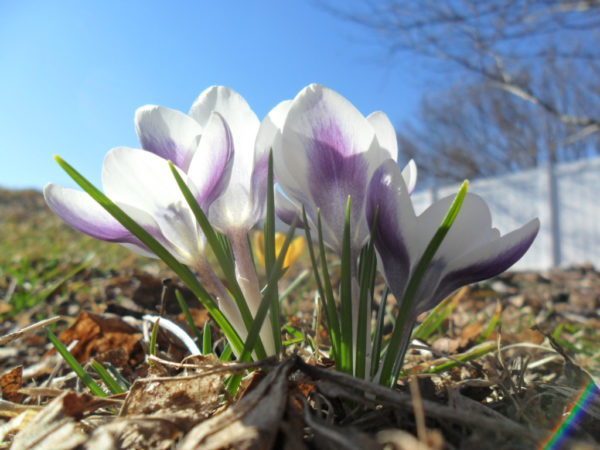
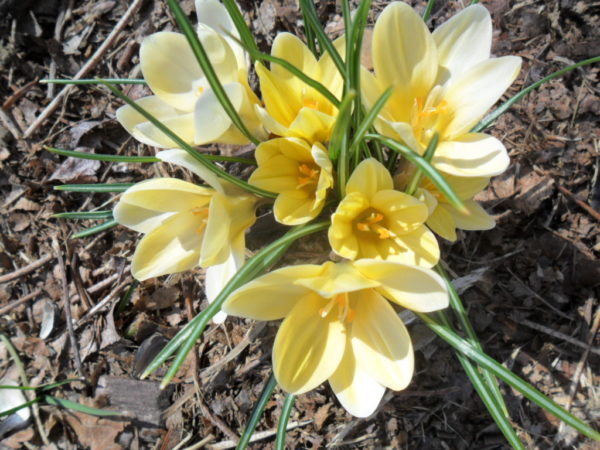
In 2019 I used a landscape service for planting, but oversaw the installation myself, and spaced the bulbs according to the recommendations which came with them. This has resulted in zones which seem sparsely populated, even with two years’ growth, but which should fill in over time, and the crocus show promise of doing that within 3-5 years.
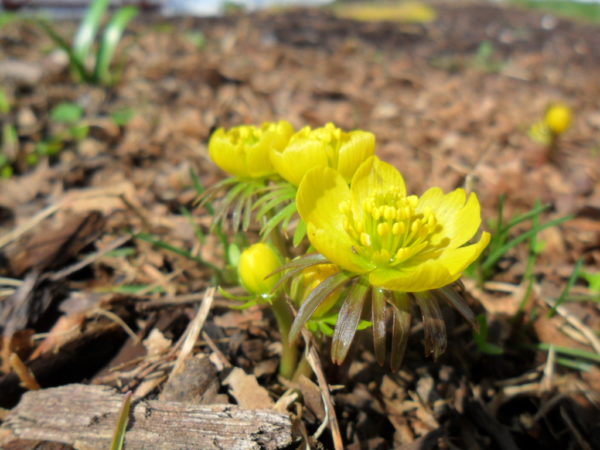
The snowdrops, on the other hand, are barely holding their own. True, last year most had only a single blossom per bulb, and this year there are many with two, but I’ve lost between 10 and 20 percent of the total, either to rodent depredation or adverse soil conditions, I’m not sure which. Snowdrops send up long stems of 3 or more inches, at the tip of which the three-lobed flower forms, creamy white but with small green dots at the base of the petals, an inner cup of white striated with thin green lines, and a tiny golden center. As these hang upside down, the lovely details are often missed, but snowdrops en masse are a joy to behold regardless, as they nod and sway in the early March breezes.
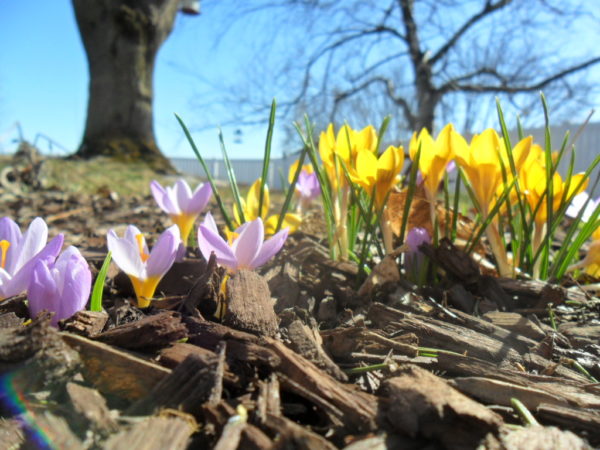
The winter aconite, a flower I was especially desirous of having, has proved to be the worst performer. Another small flower, perhaps an inch in diameter, aconite sports upturned, bowl-shaped blossoms in dazzling buttercup yellow, with a down-swept fernlike green-bronze leaf frill. At the center is a series of tiny stemlets each holding a pair of egglike orbs, the pollinating element of the flower. Aconites should be the earliest bloomers, and in 2020 mine did just that, emerging in late February, but by the time the crocus and snowdrops were in full bloom, mid-March this year, there was still no sign of them. I despaired of them ever returning, but eventually it appeared they had simply overslept, and came straggling in about three weeks late. But the attrition rate was upwards of 50%, though the survivors do show signs of expansion.
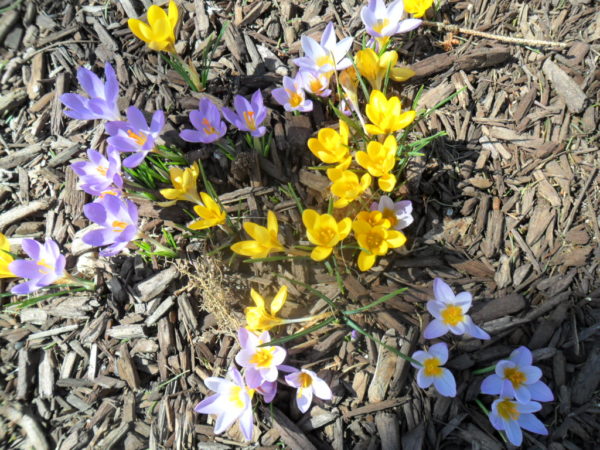
Managing the 2019 crew was tiresome and time-consuming, so in 2020 I hired a local master gardener for the second major installation and let her take control. The visual contrast couldn’t have been more complete, with Lori preferring to plant in tight clusters, for ready-made instant bouquets of bloom. Within a relatively short period, I will have to go back in, lift and divide these, but for now I do enjoy the show of islands of color they provide, as opposed to my polka dot-pattern first-years, slow to fill in but requiring less maintenance in the long run.

We planted several more patches of a botanical crocus mix, a slightly larger, slightly taller-blossomed, slightly later-blooming species. These have come in thickly in a riot of yellow, pale blue-lavender, and deeper purple shades, joined shortly by the only hybrid crocus I purchased, the almost garish Pickwick, a large-flowered variety with a base of white liberally striped with purple. These reminded me so much of the original Gypsy crocus my mother planted, which I enjoyed as a child, along with solid purple and white shades, and a few of the smaller original yellows. Very few of these still linger in the original planting bed by the kitchen door, and bloomed in conjunction with the new Pickwicks.

Next to emerge are the scillas, AKA squill. These originate in various regions, from the Mediterranean basin, north Africa and the Middle East, through the Caucasus and the Russian steppe, even Siberia. In 2019 I planted two large triangles of these in the corners of the intersecting grass paths, but the rabbits decimated them before they had a chance to mature. They took everything, stem, bud and leaf, and I was very fearful that, without that season’s growth to reinvigorate the bulbs, they would not return. The white variety which I planted in the northeast corner did come back well this year, and are almost ready to bloom; the blue variety in the southeast corner, however, did not, with just a half dozen representatives remaining.

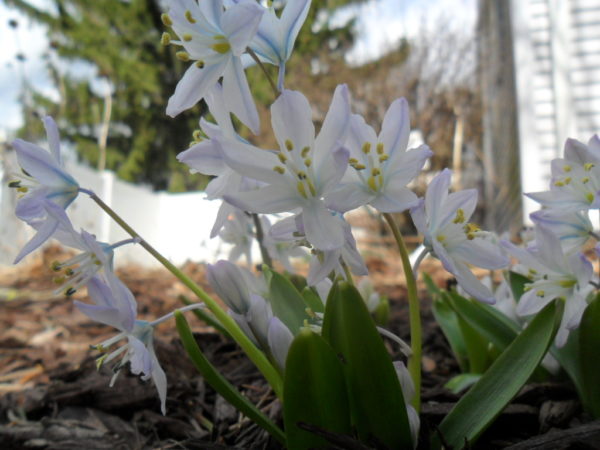
Anticipating this outcome, I reinvested in scilla in 2020, but rehomed them to other areas of the yard, in case the 2019 crop returned. Again, the 2019s are planted in a dot matrix pattern, which will fill the beds in time, goddess willing, but Lori’s 2020 clumps are stunning. The white squill we planted last fall are at peak now, huge 3-4” high bunches of small starlike flowers per stem, with pale blue veining. I also expanded my repertoire, planting Scilla Bifolia Rosea, a pink-shaded variety, and blue wood squill, a sturdier, somewhat taller version with bright blue downward-hanging blossoms. To my mind, the rosea is pinker in the bud than the bloom, which is rather pale, but makes a very lovely overarching spray of blossoms. They are just beginning to open, while the blue wood squill has only started to set buds.
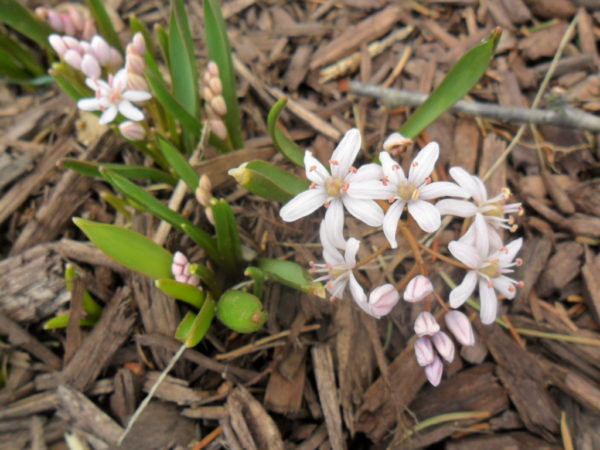
Looking for some indoor color for the Equinox, I purchased a small pot of purple hybrid crocus, which, after the bloom had faded, I transplanted into one of the many available blank spaces I now see in the landscape. A week later, I found very cheap, buck-a-pot “starter” sets of small flowering spring bulbs at Walmart, and added half a dozen purple crocus pots to the newly-planted one, creating a small oasis. These were just beginning to emerge leaf tips, and have another couple weeks until bloom, but by then, the rest of the crocus will be history, and I’ll enjoy recapturing a bit of their sunny smiles.
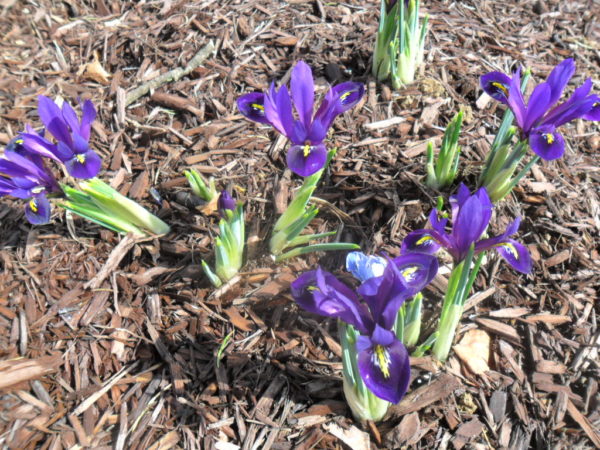
I also bought some purple-blue iris reticulata, the “netted iris”, another native of Asia Minor, similar in flower form to Siberian iris, with six bright medium-blue petals, the three inner ones curling inward and upward, the outer three arching down and spangled with gold epaulets. But these are much shorter than Siberian iris, perhaps 5-6” in height, and although they were not very far advanced when I bought them, they quickly unfurled during a stretch of unseasonable warmth, and are already in full bloom.
My main focus in bulbs has been daffodils, which are my favorites. Unlike tulips, which when they multiply sap strength from the parent bulb, yielding smaller blooms until lifted and separated, daffodils only grown stronger and lovelier as they increase, and require virtually no maintenance. Among the earliest daffodils to bloom are the diminutive tete-a-tetes, a short-stemmed, small-cupped variety in sunny yellow which blooms prolifically and spreads rapidly. Already by this second year they have almost filled their allotted zone, and I couldn’t be more pleased with their return engagement.
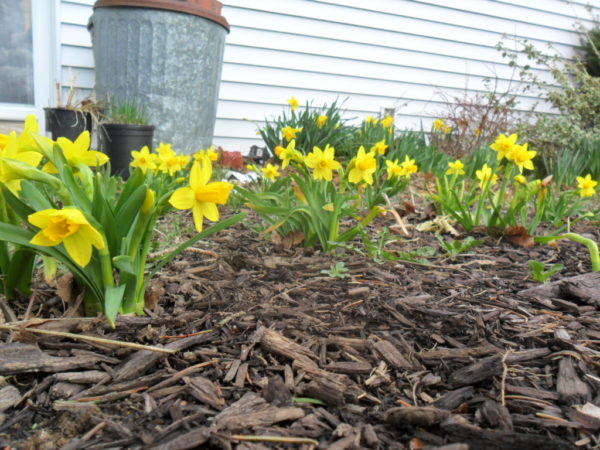
Right behind them is Jetfire, a slightly taller variety with larger, orange cups and windswept frill petals (though still much smaller than a typical daffodil). These are budded now and should open in about a week, before their smaller cousins have finished, but lingering awhile after these have faded away.
I inherited a fair quantity of standard yellow daffodils in the foundation beds, another relatively early bloomer, always cheerful but less than eye-popping. I do like my eyes popped, however, so in my purchases I focused on the more exotic varieties out there, of which I have, after two years’ planting, quite a selection! At this point, they are just emerging from the soil, or at most, setting buds, so stay tuned…


My only new shrub purchase this spring so far has been witch hazel. Talk about an early bloomer! This low-trunked shrub is more like a small tree, attaining 15 feet in height or more at maturity, its delicate branches smothered in blazing yellow blossoms that resemble long-legged spiders, with burnt caramel centers. It can bloom as early as February in some regions, though exactly where mine will settle on the calendar has yet to be determined. Witch hazel also boasts vivid fall color, with its hatched leaves turning red-orange before they shed.
That’s all to report as of now, but check in frequently, it’s going to be a stunning spring!
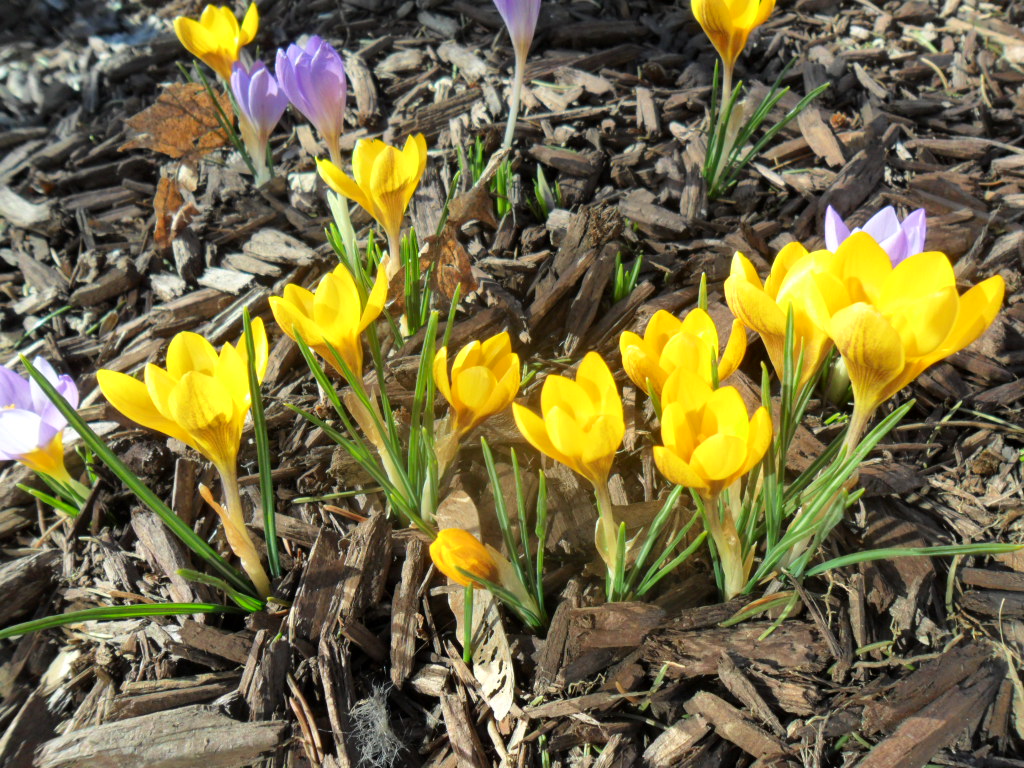

5 comments, add yours.
Linda
glorious! 🙂
Laurien
Great idea to give your passion for gardening its own platform! I enjoyed all the beautiful photos especially the Pickwick crocuses, the cheerful little daffodils, and the witch hazel. So fitting that the asteroid Gardner is conjunct your Sun! I’ll look forward to future instalments of Garden Glimpses!
Jen
I loved your post. Spring is my favorite season hands down!
Karen
They’re all so beautiful. Thank you for sharing with us.
char555
Thank you, Alex! You are surrounded by beauty…